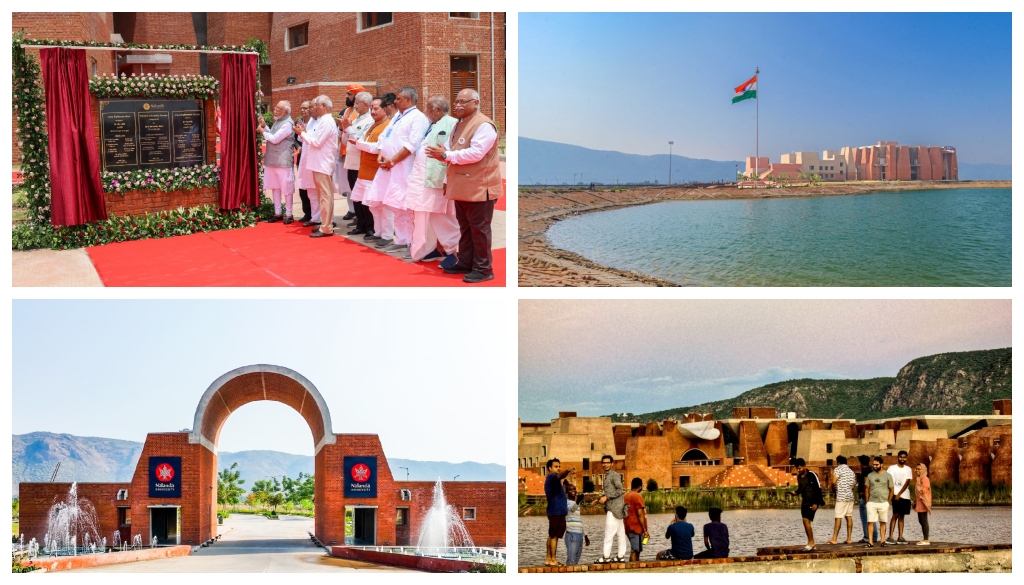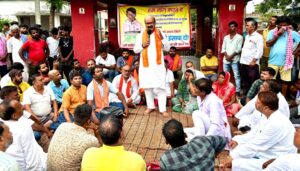Nalanda University Marks a Transformative Year: Advancing Knowledge, Strengthening Global Ties, and Honouring a Shared Heritage

Rajgir/Patna: A year ago, on June 19, 2024, the modern campus of Nalanda University was inaugurated by the Prime Minister Narendra Modi—reviving a name etched deep in the intellectual history of the world. Today, as the university completes its first year at the sprawling Rajgir site, it stands not just as a symbol of India’s academic resurgence, but as an evolving global hub of higher learning, dialogue, and diplomacy.
Steeped in the memory of a 5th-century centre of knowledge that once drew scholars from across Asia, the reimagined Nalanda University is balancing reverence for the past with a future-ready orientation. Over the past twelve months, it has expanded its academic offerings, signed numerous international collaborations, and solidified its role as a bridge between civilisations.
New programmes, new momentum
Today, we are inaugurating the new campus of Nalanda University. It is a reiteration of our commitment to encourage learning, research and innovation. It is also an effort to draw the best scholars from the world to come and pursue their education in our country. pic.twitter.com/MuwKNs6m0Z
— Narendra Modi (@narendramodi) June 19, 2024
In just one year, Nalanda has added six new postgraduate programmes to its curriculum—two launched in the last academic session and four more set to begin this year. The introduction of post-doctoral fellowships further marks its ascent as a serious research institution, offering scholars an opportunity to explore pressing questions at the intersections of heritage, climate change, and global politics.
The university’s student body has swelled to over 1,200 learners, including more than 400 enrolled in full-time Master’s and Ph.D. programmes. They hail from 21 countries—a growingly diverse academic cohort enriched further by over 800 students pursuing short-term courses.
For the first time this year, Nalanda University admitted Indian students through the Common University Entrance Test (CUET), indicating a shift toward wider accessibility and standardised merit-based admissions.
Ties that bind: forging global academic networks
अपने प्राचीन अवशेषों के समीप नालंदा का नवजागरण करता नया कैंपस विश्व को भारत के सामर्थ्य से अवगत कराएगा। pic.twitter.com/E3nwHsAXtB
— Narendra Modi (@narendramodi) June 19, 2024
The vision of Nalanda as an international university has found traction through a spate of institutional partnerships. In the past year, the university has signed approximately 20 new Memoranda of Understanding (MoUs) with both Indian and foreign institutions. These include the University of Salamanca in Spain, University of Kelaniya in Sri Lanka, and the Archaeological Survey of India.
As the nodal institution of the ASEAN-India Network of Universities, Nalanda has also linked arms with premier institutions such as IIT Kanpur, IIT Roorkee, Universitas Indonesia, University of Malaya, and Chiang Mai University in Thailand. These collaborations are not merely ceremonial; they are part of a larger academic architecture built to encourage student exchange, joint research, and shared learning across continents.
Scholarships with purpose
Inclusivity is at the heart of Nalanda’s mission, and its scholarship system reflects that commitment. Hundreds of students have benefited from schemes such as the ASEAN Fellowship, BIMSTEC, ICCR, and the NU-Bhutan Scholarship—which supports monks, nuns, and marginalised scholars. The approach is deeply rooted in the ancient university’s ethos of open access to knowledge, regardless of background or belief.
Infrastructure with a conscience
A walk through the Rajgir campus reveals how the past and present coalesce. The completion of the “academic spine”, new student residences, and sustainable facilities has turned the university into a model of green architecture. The infrastructure, designed with ecological responsibility at its core, reflects the university’s broader sustainability agenda.
Spread across 455 acres, the campus is not just a centre of education but a living laboratory of low-impact development. From solar-powered buildings to water recycling systems, the university is embedding climate-conscious thinking into its everyday operations.
Leadership rooted in scholarship

At the helm of this ambitious project is Vice-Chancellor Professor Sachin Chaturvedi—a respected economist and policy thinker who also serves as an independent director on the board of the Reserve Bank of India. Under his leadership, the university has accelerated its growth while remaining grounded in its core values of intercultural dialogue and academic excellence.
Speaking on the occasion of the university’s first anniversary, Prof Chaturvedi said, “This has been a foundational year in the modern journey of Nalanda. The University is steadily realising its vision of becoming a global centre of learning—rooted in ancient wisdom, attuned to contemporary realities, and committed to shaping the future.”
A symbol of shared heritage
A memorable mix of history and education. Nalanda is truly special. Here are today’s highlights. pic.twitter.com/J17pxCwUD1
— Narendra Modi (@narendramodi) June 19, 2024
The Prime Minister’s visit to Nalanda last year underscored its symbolic importance—not just for India, but for many nations across Asia. As a seat of learning that once hosted students from Korea, China, Japan, and beyond, Nalanda continues to resonate with the spirit of cross-cultural exchange.
Today, the question is no longer whether the ancient Nalanda can be revived—it is how the new Nalanda will define global education in the decades to come.
As it turns one, Nalanda University is more than an institution. It is a statement: that the pursuit of knowledge, once disrupted by time, can rise again with clarity of vision, strength of leadership, and a deep sense of purpose.





